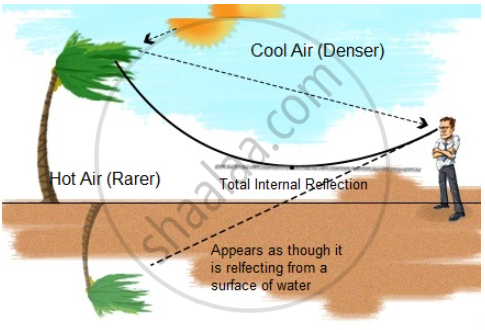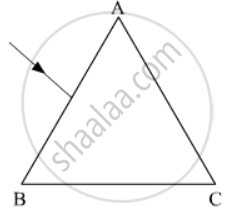Advertisements
Advertisements
प्रश्न
The phenomena involved in the reflection of radiowaves by ionosphere is similar to ______.
विकल्प
reflection of light by a plane mirror.
total internal reflection of light in air during a mirage.
dispersion of light by water molecules during the formation of a rainbow.
scattering of light by the particles of air.
उत्तर
The phenomena involved in the reflection of radiowaves by ionosphere is similar to total internal reflection of light in air during a mirage.
Explanation:
Radio waves are reflected by a layer of the atmosphere called the Ionosphere, so they can reach distant parts of the Earth. The reflection of radio waves by ionosphere is due to total internal reflection. It is the same as total internal reflection of light in the air during a mirage, i.e., angle of incidence is greater than critical angle.
Important point: The ionized part of the Earth’s atmosphere is known as the ionosphere. Ultraviolet light from the sun collides with atoms in this region knocking electrons loose. The creates ions or atoms with missing electrons. This is what gives the Ionosphere its name- and it is the free electrons that cause the reflection and absorption of ratio waves.

APPEARS IN
संबंधित प्रश्न
The figure shows a ray of light falling normally on the face AB of an equilateral glass prism having refractive index`3/2`, placed in water of refractive index `4/3`.Will this ray suffer total internal reflection on striking the face AC? Justify your answer.

Calculate the speed of light in a medium whose critical angle is 30° ?
Plot a graph between
Sine of angle of incidence versus sine of angle of refraction,
If a light ray does not undergo, refraction at the boundary between two media, the angle of incidence is:
Why do diamonds sparkle?
Images formed by totally reflecting prisms are brighter than the image formed by ordinary reflected light, why?
Choose the correct option.
Select the WRONG statement.
Total internal reflection can take place only if light is travelling from ______.
The critical angle is defined as the angle of incidence at which the total internal reflection starts to occur.
Find the value of θ in the given figure.

